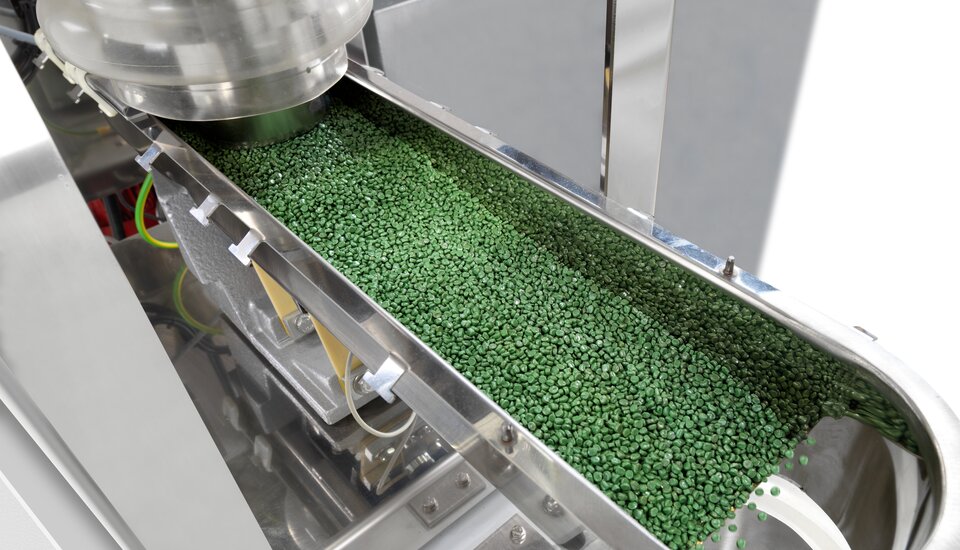
Trendgineering
More efficiency in injection molding thanks to intelligent mold temperature control
| ahead
Orca scores a success with Röchling Automotive
The Orca mold temperature control system jointly offered by KraussMaffei and Jurke Engineering is an efficient solution for making injection molding processes even more transparent and stable. What appealed to Röchling Automotive Germany in particular was its operation, which is low-maintenance and easy.
Plastics processors are becoming increasingly interested in further optimization of their existing machines using cutting-edge peripheral technology. In a best-case scenario, this implies high process reliability, maintenance-free performance and convenient integration into the injection molding machine. The Orca temperature control system provides all these effects and has been proven in the industry multiple times since its introduction.
Over 12,000 temperature control circuits have been permanently integrated into the production of leading plastic processors thus far. One of these companies is Röchling Automotive Germany, which has been using the Orca system at its Worms location since 2019. The plastics specialist with its over 4,700 employees is a worldwide partner and system provider to the automotive industry. Its core competencies range from air suction systems to the paneling of vehicle interiors.
"Contactless measurement of the Orca system brings about clear advantages for our production. It is absolutely failure-proof, durable and low-maintenance."Felix Mehl, Team Leader Process Technology Worms, Röchling Automotive Germany
The 80,000 square meters of their Worms plant alone produces over 17 million underbody and engine compartment components per year. At the same location, there is also the Worms development center, which is responsible for the entire group. The center specializes in vehicle acoustics, aerodynamics and lightweight construction concepts.
High standards for process control
In the automotive sector, the requirements of customers for process control are particularly high, entailing an ever greater need for innovative temperature control systems at the same time. For Röchling Automotive Germany, high maintenance effort and faulty flow measurements played a crucial part, which is why it searched for alternatives to its existing temperature control process.
KraussMaffei looked into the problem and was able to offer a suitable solution – the Orca system. Before the plastics machinery manufacturer could win the deal, however, Röchling extensively compared the technologies of a wide variety of temperature control systems. The deciding factor for the Orca was the combination of a cost-effective, low-maintenance and durable system.

Always a step ahead with the Orca tool temperature control
Moritz Strassner (Team Leader Process Technology Injection Molding) and Felix Mehl (Team Leader Process Technology Worms) at Röchling Automotive Germany (from left to right)
Throughput significantly improved
Before the temperature control system was put into operation for the first time after about three months, a suitable position on the machine had to be found. A well-chosen position can enable the detection of very meaningful measured values and, at the same time, significantly improve the throughput thanks to a reduction in hose lengths and pressure losses.
"We also liked the easy operation of the Orca system. All relevant temperature curves can be viewed at a glance."Moritz Strassner, Group Leader Process Technology Injection Molding, Röchling Automotive Germany
The innovative temperature control system is in use and fully functional at the Worms plant and has been able to generate added value for Röchling Automotive thanks to its mold cooling close to the contours. A twin ultrasonic sensor attached to the outside of the manifold is crucially responsible both for the heat exchange and for stable process control. The electronic temperature control system consequently allows for detecting and monitoring of all cooling circuits for throughput and return flow temperature.
At the same time, the sensor is the centerpiece of the Orca innovation and comes with an essential advantage in the measuring method – measurement signals of the temperature-controlled media– water or oil – can be transmitted and detected with zero contact.
Orca – taking advantage of bionics
The function of the mold temperature control system follows a model from nature. As its name suggests, Orca is based on sonic wave communication similar to that used by orca whales among each other. The marine mammals live in close family groups and emit clicks in the ultrasonic range for orientation and localization. Following this model, the artificial orca measures the time that an ultrasonic signal requires to travel from point A on the sensor to point B. As the flow rate increases, the signal accelerates so that less time is required for the transmission of the signal from A to B. Based on the ratio between duration and flow velocity, the current flow rate can be calculated.
In addition to the option for new machines, KraussMaffei offers the system as a retrofit for existing machines.















